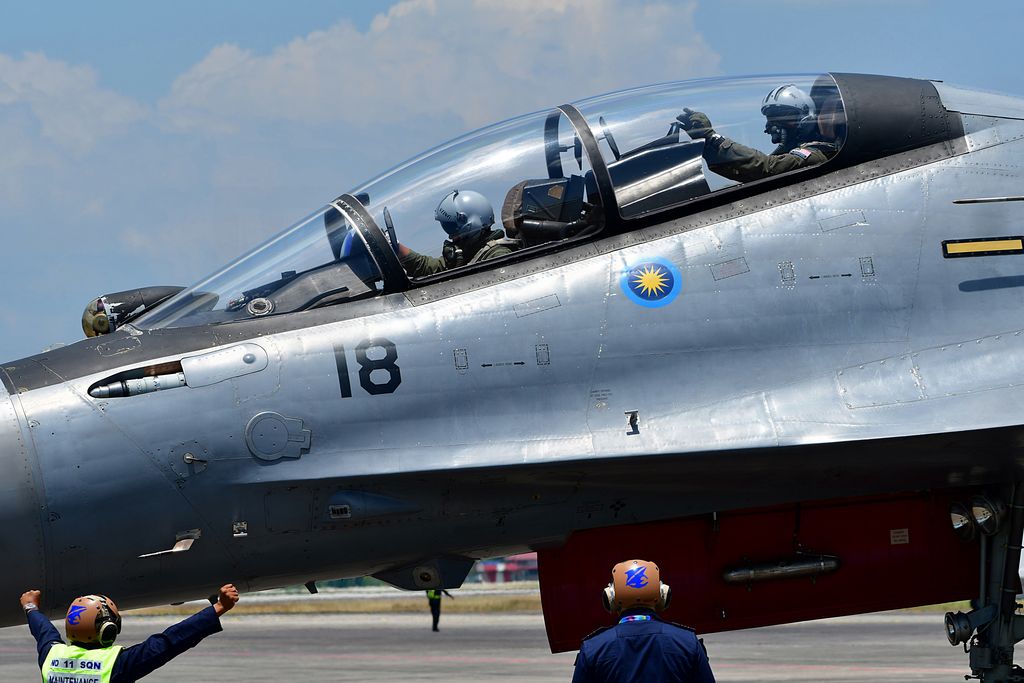
SHAH ALAM: Exercise with Indian Air Force. Malaysian and Indian military will be holding air exercises and extending cooperation in counter-terrorism as part of plans to strengthen defence ties between both countries, PM DS Najib said today.
The air exercise will involve Indian Air Force (IAF) Sukhoi Su-30MKI and RMAF Su-30MKM fighters.
Najib made the announcement after a bilateral meeting with Indian PM Narendra Modi in New Delhi. He said PM Modi suggested that the IAF contingent bound for Australia later this year should conduct exercises with our air force while on the way there or conduct joint missions there.
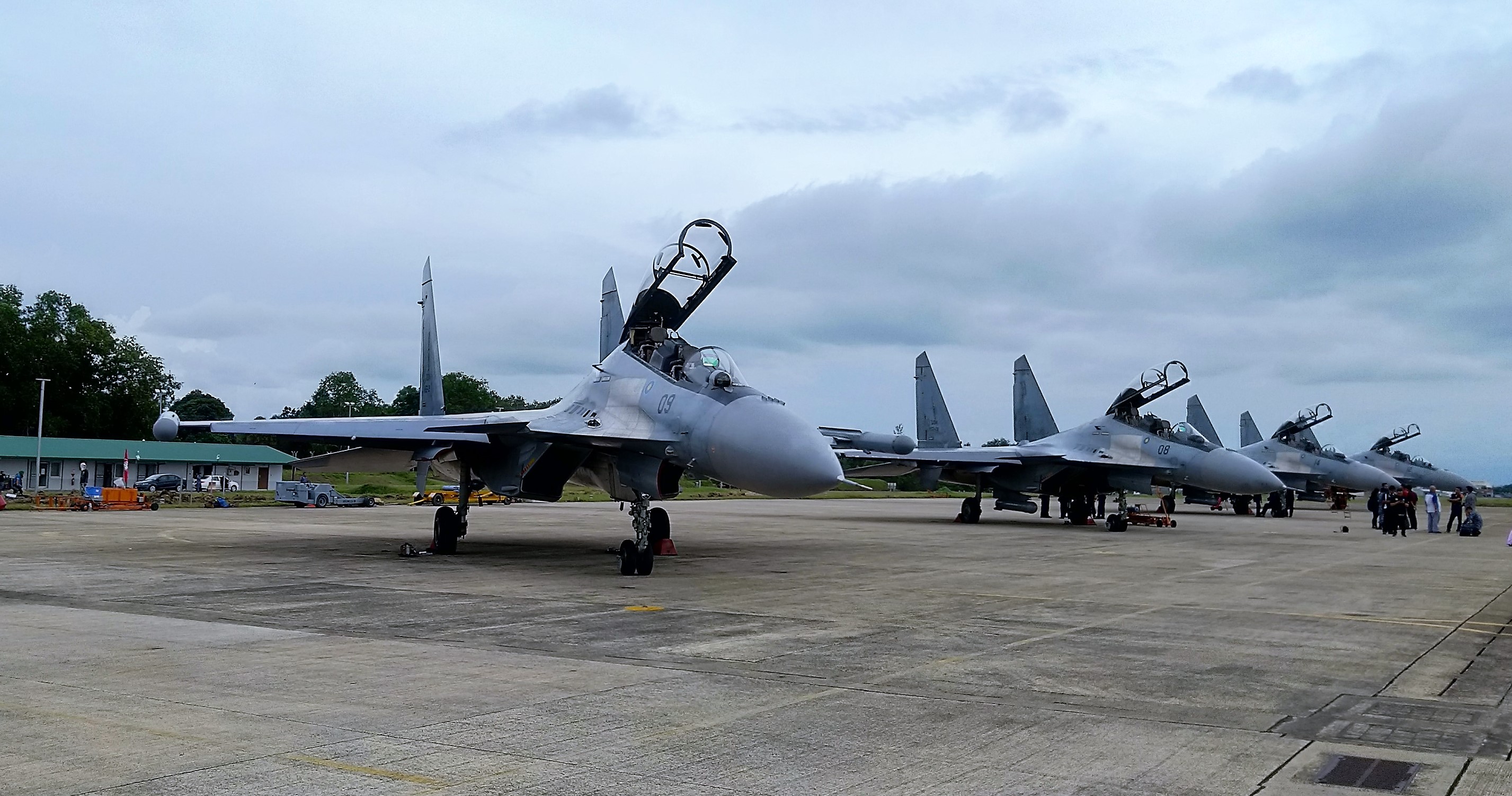
Five of the six Flankers taking part in Eks Paradise 2017 at the dispersal site at Labuan airbase.
“I agreed to the suggestion as the IAF is very experience with the Sukhoi fighters and we could also learn how they maintain their aircraft,” he says as reported by Bernama. The IAF Su-30MKI will be joining the Australian organised Ex Pitch Black in August.
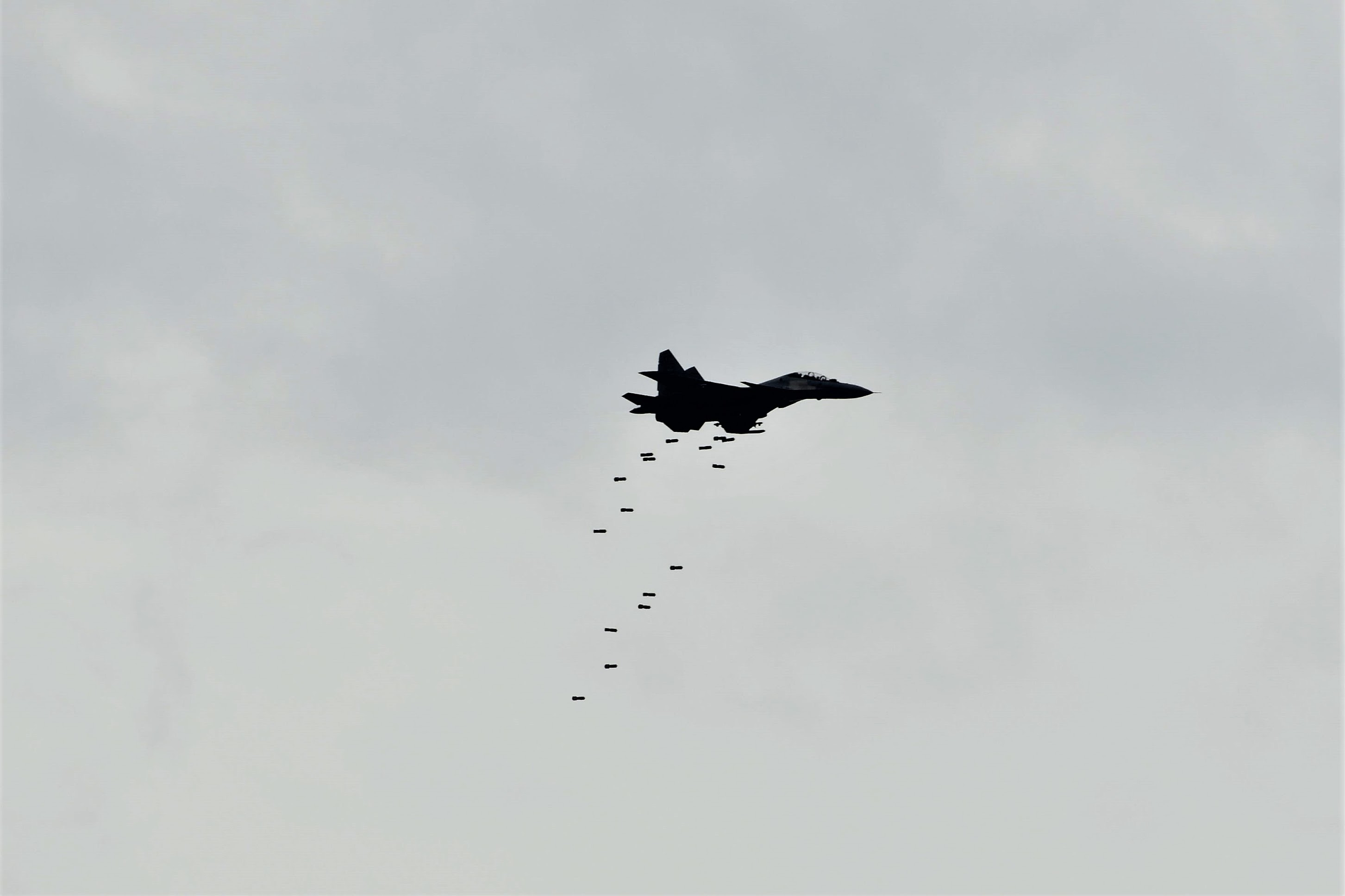
A Flanker dropping its load of bombs at the Kota Belud air to ground range.
Najib and other Asean leaders were in New Delhi by invitation of the Indian government for the 2018 Republic Day, being celebrated today.
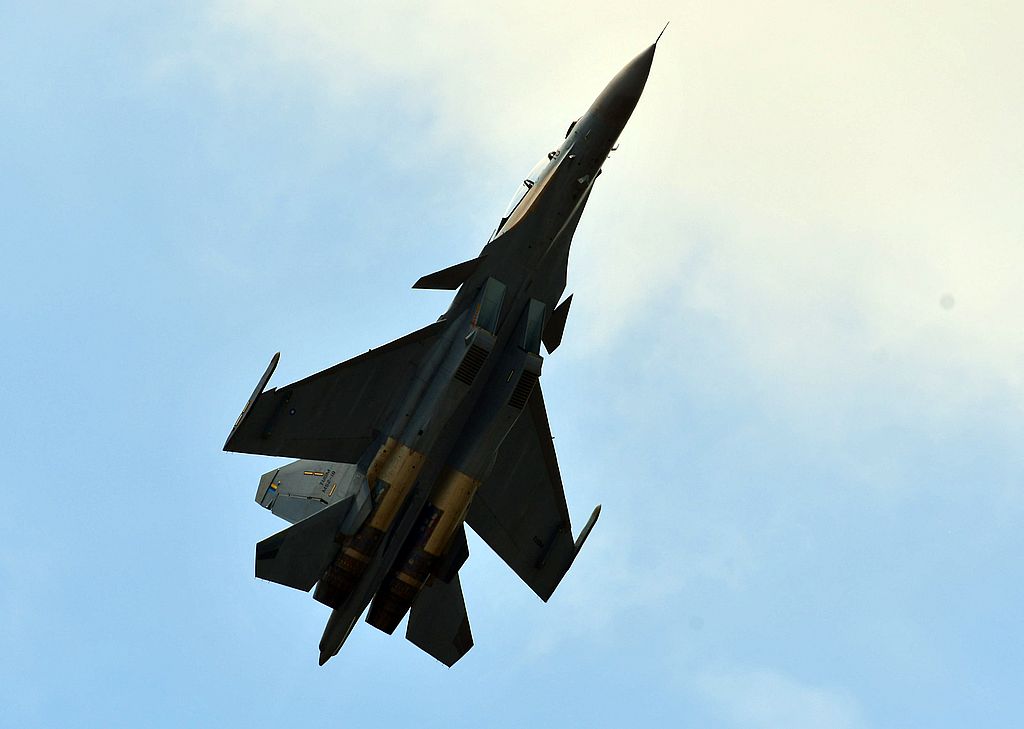
RMAF Sukhoi Su-30MKM M52-18 during its display at LIMA 17
As you aware RMAF had been working with IAF for sometime now though surprisingly both have not conducted air exercises before. RMAF send its pilots and technicians to India in the 1990s to train on the Mig-29 Fulcrums.
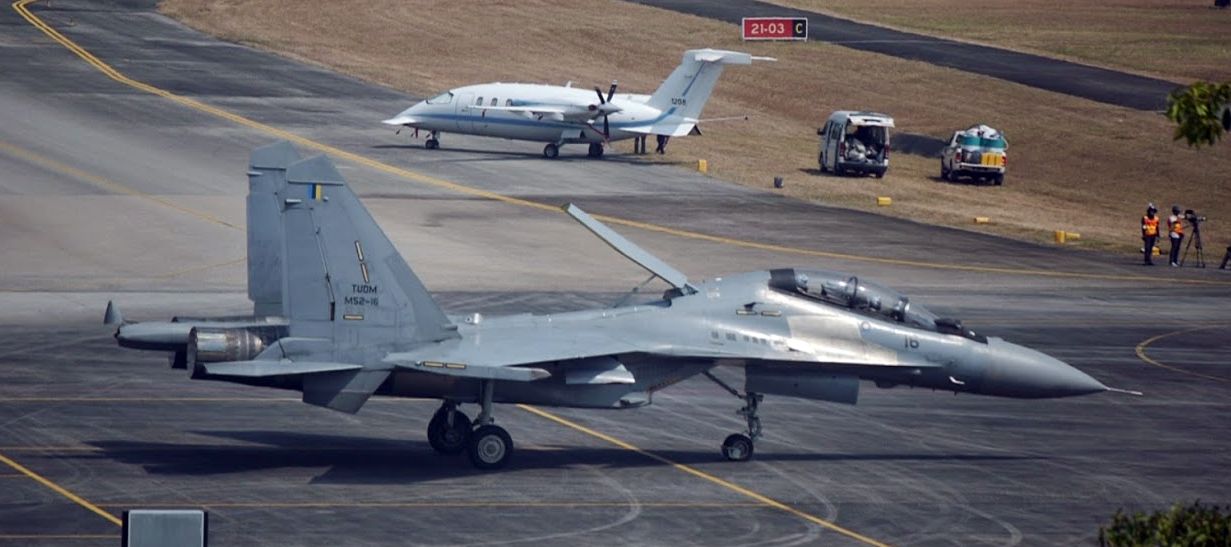
RMAF Sukhoi Su-30MKM M54-16 returning to its parking spot after the display at LIMA 2015.
When the Flankers were acquired a similar arrangement was conducted and a number of IAF Flanker crews were seconded to the 11 Squadron to help put the Russian made jet into service.
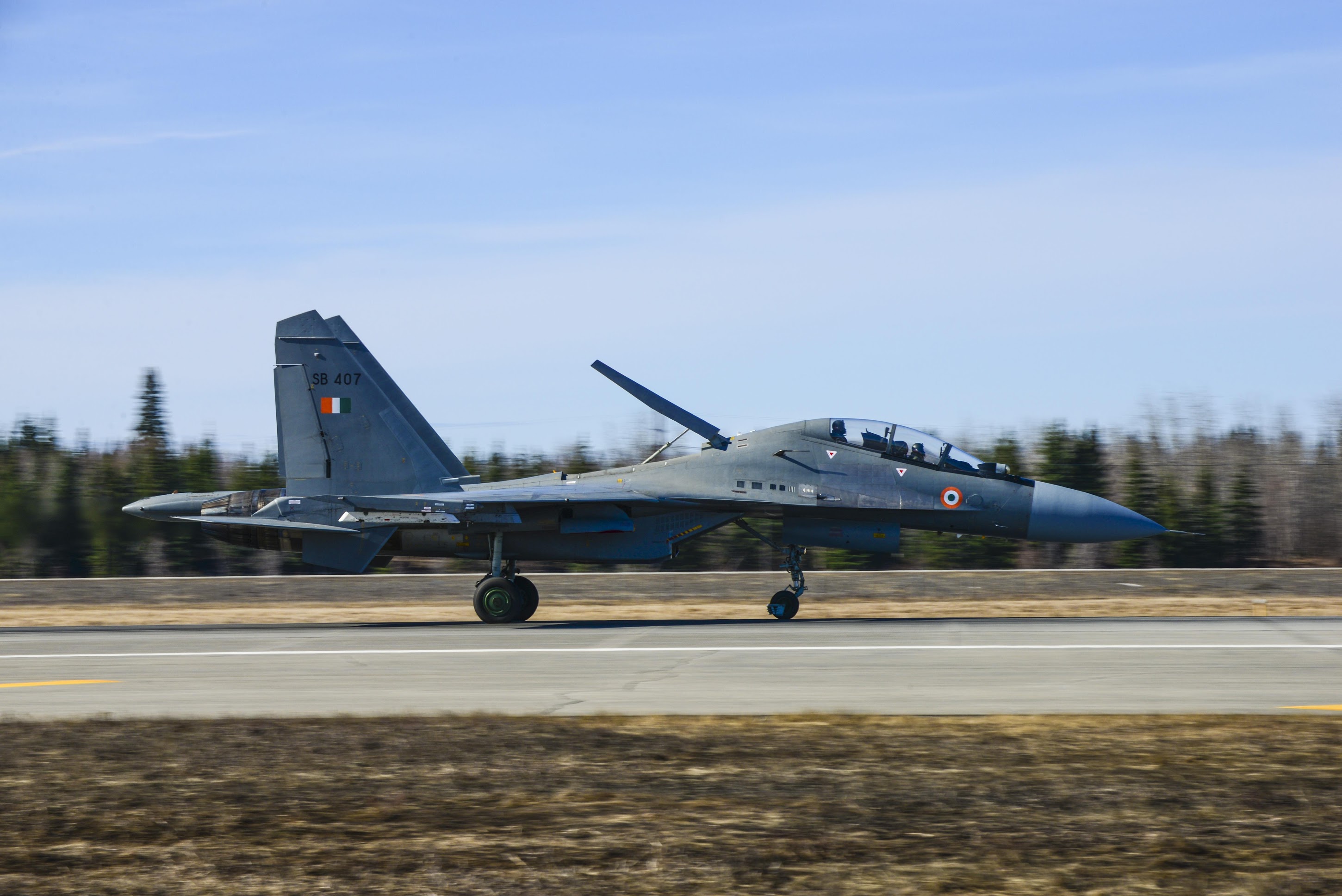
TThe Bernama story:
NEW DELHI, 26 Jan (Bernama) — Malaysia dan India berhasrat meningkatkan kerjasama dalam bidang pertahanan termasuk mengadakan eksesais ketenteraan udara bersama dan menangani isu keganasan, kata Datuk Seri Najib Tun Razak, di sini hari ini.
Perdana Menteri berkata, pada pertemuan bilateral dengan rakan sejawatannya. Narendra Modi, kedua-dua negara bersetuju mengadakan latihan ketenteraan udara bersama, khususnya dalam penugasan taktikal pesawat Sukhoi.
— Malaysian Defence
If you like this post, buy me an espresso. Paypal Payment

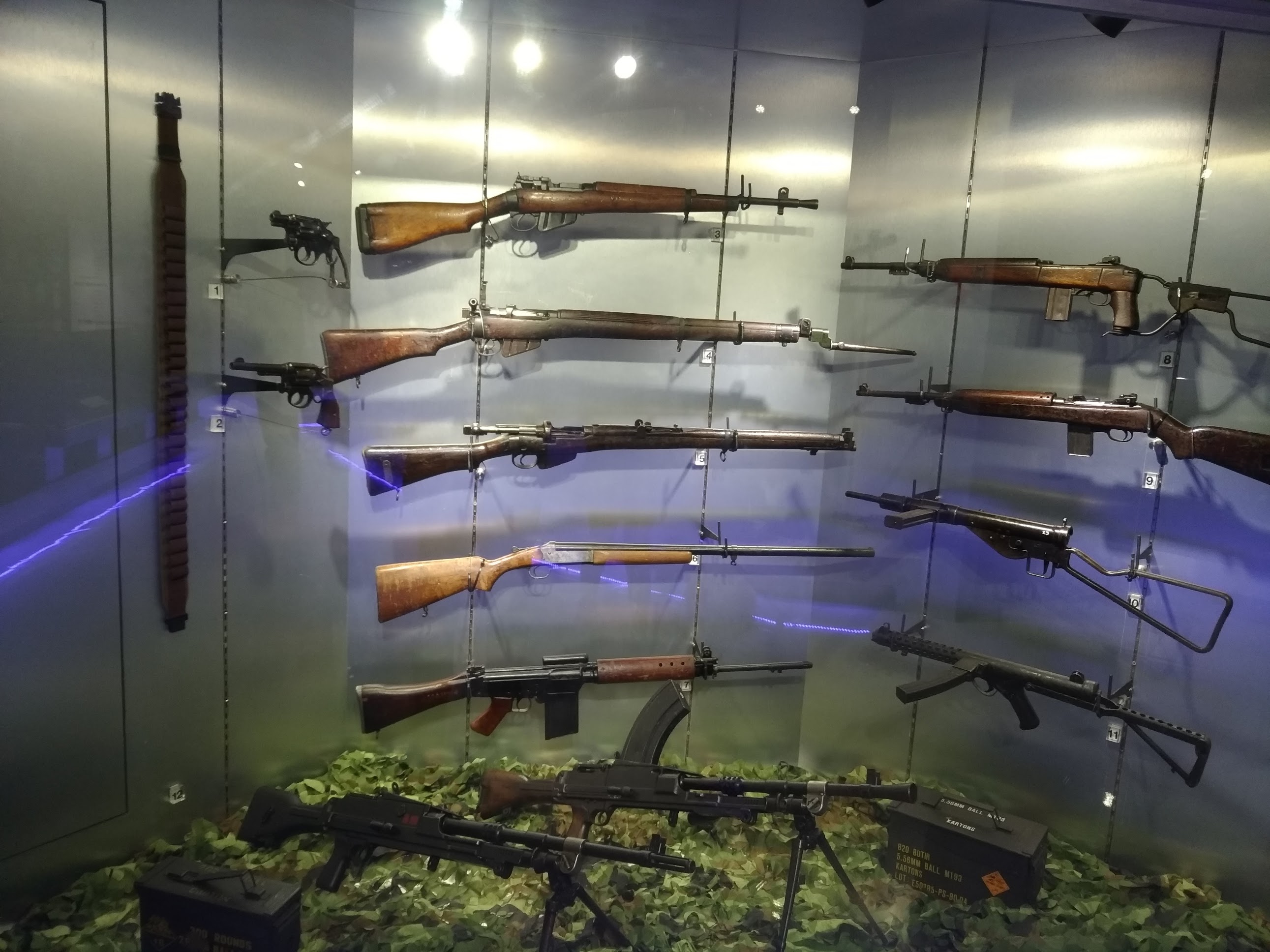
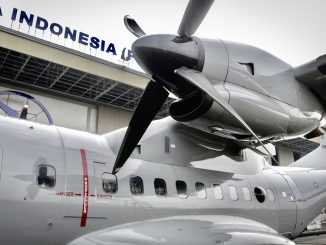
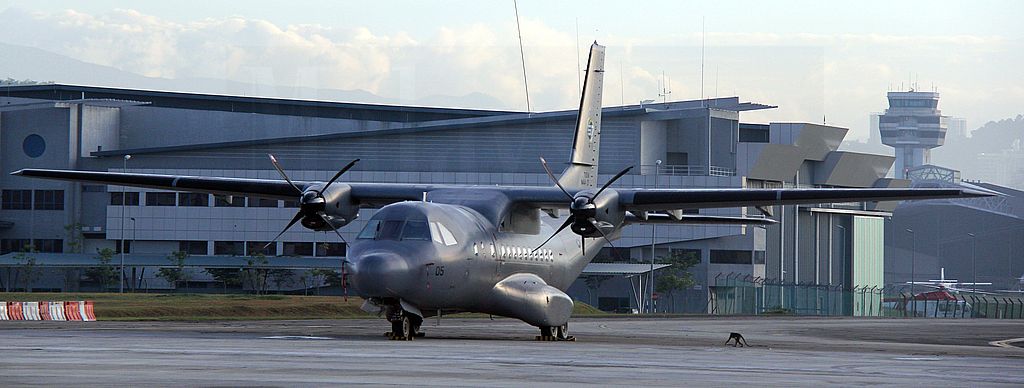
A great news for our MKM community. BTW during the meeting, does the PM know that TUDM is also going to australian Ex Pitch Black this year? The best thing is for TUDM su-30mkm to have exercise together with IAF su-30mki, then together go to australia for Ex Pitch Black.
BTW IAF su-30mki’s have been flown to red flag, red flag alaska, france, uk before. This would be the 1st time the su-30mki joining an exercise in australia. Malaysia has not been going to Ex Pitch Black for quite sometime. Last was with the hornets in 2008. Indonesia was there in 2012 (sukhoi) and 2016 (f-16). Thailand and Singapore is a regular entrant, joining virtually every ex pitch black in the last 20 years.
Reply
I am guessing the PM was informed of the plan but I am guessing as well that he was also aware that its not 100 per cent yet. There have been in the past of plans to go to PB, after 2008, but were cancelled for various reasons.
Is the MIG already retired?They have been quiet lately. If not hope they will do a minimum upgrade so the balance 10 can still fly and do at least air patrol task for the next 5 years. Atleast TUDM will not be facing huge assets deficit while awaiting the replacements
Reply
They are not flying not retired. As I reported recently RMAF has only 3 upgrade programs on record, the Hercules, Hawk and Nuri
Upgrade for just air patrol?
See here for the ballpark figure
https://www.malaysiandefence.com/eagles-typhoons-rafale/#comment-292090
It is basically a bit more than the price of 1 FA-50. IMO it is still okay but it would wholely depends on the current threat perceptions of TUDM.
In any case, if you can accept the MiGs as mainly an air policing/QRA tool, IMO we don’t really need typhoon/rafale as a replacement for such task.
@…..
” BTW IAF su-30mki’s have been flown to red flag, red flag alaska, france, uk before. This would be the 1st time the su-30mki joining an exercise in australia. Malaysia has not been going to Ex Pitch Black for quite sometime. Last was with the hornets in 2008. Indonesia was there in 2012 (sukhoi) and 2016 (f-16). Thailand and Singapore is a regular entrant, joining virtually every ex pitch black in the last 20 years.”
In every international ex there are terms and conditions how the ex will be performed.
Especially when east fighter meet west fighter. It is very lucky for MAS and IDN to have both tech so they can exploit the diff to the max.
Off topic
Indian navy’s 3rd scorpene launched
https://pbs.twimg.com/media/DU2n8FvVwAEBlAE.jpg
Reply
Just asking if we got money to add to our Scorpenes, should we order them from India (granted if France will allow it of course)?
My take?
Contract india or brazil to build the modules. Assemble them in sepanggar hangar after the overhaul of our current scorpenes have funished.
At least another 1. And brought forward to RMK13, 2026-2030. Unlike the current tldm plan for a new sub only in RMK14 2031-2035.
I would prefer another 1 scorpene, to make the fleet to 3, and 6 more CSIC S600 submarines in RMK14 and RMK15. To take the name of FAC(G)s. This could be paid for by reducing the scorpene buy from 2 to 1, and Kedah class from total of 18 to 12 (just 6 more new kedahs)
http://military.cnr.cn/wqzb/zcwq/20171121/W020171121370265899314.jpg
As for the LMS, i would prefer they take over the name of FAC(G), and if they take the idea for LMS-B, this to take the name of vospers with the name of weapons.
As for the LMS, i would prefer they take over the name of FAC(M), and if they take the idea for LMS-B, this to take the name of vospers with the name of weapons.
On the CSIC S600
S600 Specification
Displacememt: 600 tons surfaced
Length: 50 m
Width: 4.6 m hull diameter
Height: 5.6 m
Crew: 15
Range: 2,000nm, with 400 nm on AIP
Endurance: 20 days
Speed: 15 kt max submerged, 9 kt surfaced
Operating depth: 200 m
Armament: 4 x 533mm torpedoes
Price? I am targeting a price of less than usd150 million each. This is based on the Croatian Drakon 220 which was promoted for euro50 million each, which displaces 220 tonnes. The Drakon 220 has been promoted to Egypt and Indonesia before.
http://i62.tinypic.com/2yo280g.jpg
The harsh reality is that on top of Cope Taufan, CARAT, Bersama Lima, Helang Malindo, Air Thamal and others [some annually and some not]; adding another exercise means aircraft have to be allocated. There will also be times when aircraft have to be available for one off or non regular exercises like the ones we’ve done with USN carrier groups transiting the Straits of Melaka and others. With only so many air frames available already doing various things [training, QRA, etc] and not all operational at any given time; sparing air frames for yet another exercise will be challenging..
Adding another exercise; whether one off, annually or bi-annually is great but it requires a lot of planning and the allocation of assets; not to mention funding and the extra hours of maintenance aircraft will need when they have to generate ‘x’ number of sorties per day over a given period; even a short one.
Romeo – ”In every international ex there are terms and conditions how the ex will be performed.”
This is for safety reasons and involves all exercises, not just ‘international ex’. At times certain handicaps [the use of AEW or data links, etc] will be imposed in order for one side not to have too great an advantage. At the end of the day; the whole purpose of most exercises involving non NATO or non allied countries is not to see who chalks up more air to air kills or see which aircraft has a better instantaneous turn rate or trust to weigh ratio when loaded down with ordnance but to enhance cooperation and interoperability.
In the case of non NATO countries participating in NATO exercises or ones involving Tier 1 air arms like Pitch Black and others; the use of EW and radars will be strictly regulated, as will ACMI pods [for different reasons]. Also, radar and radio frequencies employed will not be the same as that used for operational taskings.
… – ”IMO we don’t really need typhoon/rafale as a replacement for such task.”
It depends. On paper even a Hawk 200 can be used for QRA as not all QRAs will require a supersonic aircraft – depends entirely on the type of aircraft to be intercepted, its speed, distance, etc. On paper, although a QRA aircraft should have a radar it doesn’t necessarily have to have one [assuming it’s a peacetime QRA and the country is not in a state of tensions] as QRAs are essentially GCI with the aircraft in question only employing radar at a later stage.
kamal – ”If not hope they will do a minimum upgrade”
If they’re going to fly for a few more years, the ‘minimum’ or essential will be overhauling the RD-33s and the Alamos and Archers time expiring. Over time, as they age; some avionics or systems might also break down and require replacing.
On SSKs. Even if there was cash, the fact is that for the foreseeable future we’ll only have enough crews to man 4 boats.
Apart from procurement costs another issue is SSKs tend to be very expensive to operate and support; thus its not just how much we need to buy more boats but how much the operational budget will be increased to cater for additional boats. On Indian production, given the various delays technical issues and bureaucratic delays that have affected various ships/subs, going down the Indian route may not be a good move.
The TUDM pitch black 2018 contingent will consist of a400m and F/A-18D hornets.
https://scontent-sea1-1.cdninstagram.com/vp/64c3d3ef64bee51da60e7af609435580/5B077067/t51.2885-15/s480x480/e35/26305801_170522886897819_6792182503051362304_n.jpg?ig_cache_key=MTcwMDUyNTE3NDM3MTQwMjc0Mg%3D%3D.2
Reply
Hahaha…😀
“Even if there was cash, the fact is that for the foreseeable future we’ll only have enough crews to man 4 boats.”
Just for argument’s sake, assuming we had the cash for another boat, how long would it take to raise another crew? The crew size is just 31 so would be be limited for “the foreseeable future”? It might take longer to build support infrastructure.
Each of our subs have 2 sets of crew. So there is at least 124 people who are qualified for sub operations.
If we just add 1 more boat, with our extensive scorpene simulators, we could probably fill up the positions quickly, faster than the time it takes to actually build a new submarine.
The CSIC S600 in the meantime, have a manning of only 15men, so the manpower can be raised in time for the new boats to be commisioned.
… – ”Each of our subs have 2 sets of crew. So there is at least 124 people who are qualified for sub operations.”
Do they really? On paper maybe but reality’s different. A navy our size can only have so many trained people; especially sub trained people who have to meet requirements not needed elsewhere. On top of already limited manpower, there are people who leave the service, attend courses elsewhere or who have to leave the sub service for various reasons. Also, we’ve done a lot to create a shore support infrastructure in the form of a simulator, storage facilities, battery support facilities, support facilities; the ability to support 2 boats. Adding the number of hulls might also necessitate the need to improve the shore support infrastructure; including support personnel.
We have been offered COSMOS mini subs before. Mini subs have significantly improved over the years but their core liabilities remain : limited range and endurance, basic and short range sensors and limited internal space. One can make the argument that we need mini subs for special forces insertion but do we really?
What added value is there in getting S600s or another other sub apart from Scorpene? That would leave us in the silly and unenviable position of having 2 types of boats; both with different propulsion, weapons, CMS, etc, etc, as well as different operating and support philosophies. Sure, S600s will be cheaper than Scorpene but there are various penalties that come with it; in our case.
AM – ”Just for argument’s sake, assuming we had the cash for another boat, how long would it take to raise another crew?”
Assuming a sub was ordered today and delivered in 2-3 years, manning would not be an issue but if a sub suddenly appeared today, having enough people to man it would affect our ability to operate the 2 we already have. of course its not only the actual number of crews we have but the number of people on shore to support those subs. Plus the fact that the operational and support budget will have to be increased to cater for new hulls.
AM – ”It might take longer to build support infrastructure.”
Indeed, look at our experience in doing so. Buying the hardware is always the easy part.
… – ”The CSIC S600 in the meantime, have a manning of only 15men so the manpower can be raised in time for the new boats to be commisioned.”
To me the fact that S600 only needs a crew of 16 raises several questions of whether it really suits our operational needs. At 600 tonnes displacement it’s at best a coastal boat [similar to the Type 206 – great for the Bundesmarine which hardly ventured out of the Baltic and North Sea] which will have less range, endurance and internal volume compared to a larger boat. Needing just 15 men is great – due to a high level of automation – but can a 600 tonne boat deliver the same capability as a larger boat displacing 1,500 – 2,000 tonnes? The answer is obvious. We may not be an out of area operating navy or be a deep water one but the fact remains that operating considerations [primarily the South China Sea] dictate the need for a sub to have a certain displacement to cater for the needed range, endurance and internal volume [needed for sensors, weapons, furl, etc, etc.].
Given it has less internal space how does the sensors capability on a 600 tonne boat compare to a larger [but smaller compared to ocean going ones like the Colins, Upholder, Soryu and Kilo] sub like the Scorpene [also intended for littoral operations]? Having just 15 men on board also means there’s less people to maintain watch and less people to cater for unexpected contingencies. Same thing with surface ships, it became a trend starting from the 1990’s to offer ships needing less crews [very appealing to costs and manpower constrained navies] but the downside is that if damage control [always manpower intensive] is needed there are less people for the job.
Whatever advantages other designs have to offer, whether in procurement costs or performance; will be offset by the fact that operating 2 different designs increases, not decreases, our already large logistical/support footprint. As such, the value in getting additional Scorpenes must be seen in this light; despite it being more expensive to procure. The problem for the RMN is that by the time approval is finally granted to get follow subs, DCNS might not be producing the Scorpene anymore ….
In malaysia’s case.
Let see the original submarine plan in 15 to 5.
1 sub in RMK14 2031-2035.
1 sub in RMK15 2036-2040.
That means a new sub only in 13-18 years time, with the 4th more than 20 years from now. In that time, the original scorpenes would have been like 30 years in service. By 2030, thailand would have 3 subs, indonesia 8, singapore 6 (4 new 218SG), vietnam 6 and probably myanmar would be having their sub capability too.
If we go for 1 more scorpene in RMK13 2026-2030, we could still be in time to leverage the indian and brazilian scorpene manufacturing capability. We would also leverage all the knowledge and manpower gained from overhauling the scorpenes in telok sepanggar for the newbuild scorpene. Modules could be build by brazil and india, and fitted out in telok sepanggar. If we push it out to past 2031, the indian and brazilian program would not be there anymore, and knowledge and people from the scorpene overhaul project would have moved on.
Going for a smaller 600tonne S600 sub.
– cheaper, smaller. Would be possible to build them in malaysia. Something like the LMS programme could be done.
– smaller size means that it could be used in shallower waters off terengganu and kelantan; around the langkawi archipelago. It is around the same size as the type 206 submarine that is designed for shallow black sea duties.
– its small size would be more harder to detect, especially in waters full of commercial ships.
– small size does not mean unable to dive deep. It has 200m designed operational depth (not test depth).
– more subs mean higher availability in spite of maintainence and overhaul cycles.
– sensor suites, with the electronics advancements means smaller size does not degrade the capability too much.
This would be build in RMK14-15. A scorpene replacement would be the next programme, starting RMK16.
As for using 2 types of subs, singapore is doing fine, and would continue doing so with 2 Archer and 4 218SG subs.
The TLDM 15 to 5 plan as it is, are very comprehensive, achievable plan that is quite difficult to better. But this is my alternative, bringing forward 1 scorpene to RMK13, reduce the newbuild SGPV to 6 instead of 12, getting 6 CSIC S600 subs and getting the LMS-B
TLDM 15 to 5.
RMK11 2016-2020
3x SGPV Gowind
3x LMS
RMK12 2021-2025
3x SGPV Gowind
8x LMS
1x NGPV Kedah
1x MRSS
alternative RMK12
3x SGPV Gowind
3x LMS
9x LMS-B
1x MRSS
1x NGPV Kedah
RMK13 2026-2030
5x NGPV Kedah
7x LMS
2x MRSS
alternative RMK13
2x NGPV Kedah
1x Scorpene
3x MRSS
3x LMS
8x LMS-B
RMK14 2031-2035
5x NGPV Kedah
1x Submarine
alternative RMK14
3x NGPV Kedah
1x SGPV Gowind
3x Submarine CSIC S600
RMK15 2036-2040
1x NGPV Kedah
1x Submarine
4x SGPV Gowind
alternative RMK15
3x SGPV Gowind
3x Submarine CSIC S600
RMK16 2041-2045
2x SGPV Gowind
On the LMS-B
https://www.malaysiandefence.com/another-perspective-lms-2/
https://www.malaysiandefence.com/another-perspective-lms/
I believe something like the LMS-B would be more suitable compared to the CSIC LMS-68 for missions that are undertaken by TLDM like
– rescuing civilians from islands in bad weather like what happened to Tioman Island.
– logistics, dry stores and fuel, now done by KD Sri Tiga and KD Sri Gaya and commercial ships like MV Rentak Mewah https://pbs.twimg.com/media/DVwcX-TU8AAXWk4.jpg
– Hydrographic survey using commercial vessel like the MV Dayang Sari, and MV Aishah aims 4.
– SAR events like the Air Asia QZ8501.
The LMS-B design, is currently used by the Sea Shepard (MV Ocean Warrior) for missions into the antarctic regions, and its long range shown with its non-stop deployment from europe to australia. It recently helped Timor Leste Police to catch illegal shark fishing.
http://15858-presscdn-0-65.pagely.netdna-cdn.com/wp-content/uploads/2017/03/Sea-Shepherd-vessel-2.jpg
https://www.seashepherd.org.au/images/news/2017/news-170109-1-1-170103-SA-OW-receives-supplies-from-SI-during-short-rendezvous-021-0127-1000w.jpg
http://seashepherd.info/images/editos/2017/Nemesis/edito-170216-fr-08-1000w.jpg
https://static.seashepherdglobal.org/media/filer_public/32/55/3255f64e-2aa3-4b60-aa91-a2a0b30e8468/east-timor-1600×900.jpg
.. – ”As for using 2 types of subs, singapore is doing fine, and would continue doing so with 2 Archer and 4 218SG subs.”
Based on that you maintain that it’s also alright for us? You serious?
It’s alright to have 2 subs with zero propulsion, CMS, sensor, weapons, etc, commonality and requiring 2 separate shore support infrastructures; not to mention the need to train people to operate and maintain 2 different boats? You make it sound like the RMN has a vast pool of support personnel with vast shore support infrastructure already in place.
As for the RSN, it had no choice but to get a different boat as there were no other ex Swede Västergötlands available and they wanted a newer gen boat. That’s why they operate 2 different types of boats. The long term intention is to operate a single type of sub.
… – ”Going for a smaller 600tonne S600 sub.
– cheaper, smaller. ”
You are looking at the paper pros but not the cons. A smaller boat means less range, endurance and internal volume. Yes it can go in shallow waters but so can a Scorpene. If there are places too shallow for a Scorpene to operate in then there’s probably no reason for it to be there in the first place.
… ”its small size would be more harder to detect, especially in waters full of commercial ships”
The same also applies to slightly larger subs. A sub displacing 2,500 tonnes can hide just as easily amongst commercial shipping than a 600 tonne one can. Also, a sub displacing 600 tonnes might even be noisier than a larger boat.
… – ”small size does not mean unable to dive deep.
Nobody indicated otherwise but the question is how deep? The fact remains that a more high end sub [with a stronger hull] will be able to dive deeper [for whatever reason]. Never mind that most of our waters are shallow in the first place.
– more subs mean higher availability in spite of maintainence and overhaul cycles.
More subs which consists of different subs does not automatically result in ”higher availability”………. Again – operating different subs creates its own set of issues; namely the need to support 2 different boats with zero commonality. There is a reason why most navies tend to cut down on the different number of subs operated.
… – ”sensor suites, with the electronics advancements means smaller size does not degrade the capability too much.”
A smaller boat means it has less space to mount the various needed sensors, irrespective of ”electronics advancements”. What sensors there will be on board will be smaller [less range] due to space limitations and there will be less space for the needed power supply. Even with larger boats, to conserve power supply, at times the CO will switch off parts of the AC or CMS and here we’re talking about a 600 tonne boat.
Even if your 600 tonne boat has AIP it will still need to have batteries of sufficient size as back up; as well as a specified amount of space for fuel and for water. Size or the lack of it comes with limitations. There is also the fact that a sub that size will not have good sea keeping when on the surface; yes despite AIP and having a snort, the reality is the boat will still spend time on the surface.
In short, given its needs, I highly doubt the RMN has a need for a boat smaller than Scorpene due to the penalties that come with it.
Some navies need small boats; some navies need larger boats. It depends. The fact remains that smaller boats have more disadvantages than larger boats; thus it makes more sense to have a single type of [larger] boat able to do a variety of roles rather than also having a smaller boat which has a more limited ”skill set” or capability.
… – ”The TLDM 15 to 5 plan as it is, are very comprehensive, achievable plan that is quite difficult to better.”
On paper yes but in reality many [including those in uniform]
are worried and doubtful whether the 15/5 is what the RMN really needs and whether it will deliver the needed capability. We tend to
emphasis more on the fact that the 15/5 will create cost savings by streamlining support\logistics and replacing old and expensive to support FACs, Laksamanas and other ships [that’s the good part] but at the end of the day how successful the RMN is in getting the desired capability is highly dependent on various factors beyond its control.
The TLDM plan to keep to only 5 classes of ships are commendable but whether it is economical for us. We may be able to purchase it but do we have enough budget to operate and maintain it optimally with our small budget. No doubt as economic growth in the future looks promising but would the political master dare to trade economic agenda for increase defense spending? The current structure of 6 Kedahs, 6 SGPV, 4 LMS, 2 subs plus supports ships and 12 helis seems to be the accountant’s choice in view of lack of strong external threat (which i consider China will never be regarded as such due to our economic dependence)
@ Azlan
” You are looking at the paper pros but not the cons. A smaller boat means less range, endurance and internal volume. Yes it can go in shallow waters but so can a Scorpene. If there are places too shallow for a Scorpene to operate in then there’s probably no reason for it to be there in the first place”
The pros of a small sub is that it could be submerged in shallow waters, that even a scorpene cannot dive. Most of the waters around penisular is less than 100m. For example the Petronas Duyong oilfield offshore terengganu, is at a water depth of just 76 meters, and that is very far offshore.
https://lh5.googleusercontent.com/proxy/IRt0DGK-ISOan-tcEpDVe9ZyGNYocKeVfOYrj-gmhY4M_FB1LFG29Gh1vg2ifzQqFp5CKJVxNt-0stSvmKT_AwF4x7XC=w1200-h630-p-k-no-nu
For example, the small size of german type 206s means it can dive in less than 20m of water. And yes of course there is the cons.
– range of 2000nm (3704km) Same as LMS. Scorpene has 3 times the range. It has an endurance of 20 days. 3 weeks at sea. For littoral operations that is fine. For offshore work there is still the scorpenes. For the future, higher power density batteries developed for automotive and solar industries could be used for submarines, eliminating the need for AIP altogether.
– weapons. Most likely no reloads for torpedos.
With the possibility of even shallow waters lurking with subs, an adversary needs to allocate vast resources to find a sub that is probably not there, and of they dont have the resources, a very credible deterrent for them not to enter malaysian waters freely.
kamal areif … – ”We may be able to purchase it but do we have enough budget to operate and maintain it optimally with our small budget.”
The whole idea is to create costs savings that will result in a fleet that is more economical to support. At the moment we just have too many different ships in service; each with different radars, electronics, etc. The idea is to increase commonality and cut down on what we don’t need and is too expensive to run. The funds that are saved are then channeled towards other things – that is the whole idea behind the 15/5; to use cash already there, as opposed to cash not already allocated.
The main concern is whether the 15/5 can be successfully implemented in the long run – in private various serving officers are very skeptical about the 15/5 and whether it will create the desired effect and capability. The 15/5 was the brainchild of the current RMN Chief and he managed to get it locked in with the EPU but not all of the RMN’s senior leadership personally agreed with the plan due to various legitimate concerns.
Take the LMS for example, there is no indication as to when these ships will receive their mission modules after they enter service and whether those mission modules will get the job done. There is also no indication when follow on LMSs will be ordered. There is also no indication for that matter as to how effective the LMS will be even AFTER they have been fully fitted out.
The Kedahs and LCS. By the time follow on ones are ordered, the first batch will be in need for a SLEP and will require various things to be replaced. If follow on batches don’t share much commonality with new batches; then it will defeat the whole purpose of the 15/5/ – no point having a Batch 1 Kedah fitted with COSYS but having a Batch 2 one fitted with a Chinese CMS [bough because it’s cheaper] as both run on different software, amongst other things. We can go for Chinese gear [being cheaper] but there will be integration costs and what’s the point of having LMSs that share no commonality with other assets? That would be contrary to what the 15/5 is aimed at achieving.
As for the MCMVs, many, including … are convinced that ships fitted with MCM modules are the way to go but even in the USN questions are being asked within the MCM community if MCM modules can do the job just as effectively and fast as purpose built MCMVs. What looks good on paper doesn’t always turn out to be good in reality; especially given that various navies have their own requirements and their way of doing things. The fact also remains that not all navies have gone down the MCM module route and are still buying new purpose built MCMVs. If MCM modules really offered a risk free and effective way of doing things, all Tier 1 navies would have gone for them but this is clearly not the case.
There is also the not insignificant matter of costs. As a former RMN MCMV commander [he’s had a look at proposals received] once asked me : ”can we really afford MCM modules containing a sonar, USV, UUV and UAS? Can ship crews which do not regularly get MCM training be expected to have the same level of experience and skills as a crew of a purpose built MCMV”?
MCM [like ASW] requires constant training and reaching a specific level of skill takes time and lots of practice. Like other MCMVs the Mahamiru class perform patrol duties but crews get regular MCM training. Given that the RMN is a peacetime navy that has to do various things; how often can we realistically expect ships [which are already busy meeting various commitments] to be fitted out with MCM modules?
Like I keep saying, what appears sound on paper doesn’t necessarily mean it will translate to the same in reality; as there are various factors at play. Factors beyond the RMN’s control.
… – ”The pros of a small sub is that it could be submerged in shallow waters, that even a scorpene cannot dive. ”
I never said there are no advantages in having a small sub; merely that in the context of the RMN it makes no sense to have a small sub and that having 2 types of subs to maintain/support adds extra pressure on an already stretched shore support infrastructure. As it stands there is zero requirement for a small sub and zero requirement to get anything other than Scorpene because the RMN has had painful experience not standardising.
With regards to a small sub; how often will we need a small sub to go into very shallow waters? Also, a small sub in very shallow waters will not have room to maneuver and might be able to be spotted visually from the air. At the end of the day; why go through all the trouble to have 2 subs to do slightly different things when one can have just 1 type of sub to do a bit of everything? When viewed objectively there are more pros than cons when it comes to a small sub.
As for MCM missions, yes of course there is 2 opinions on this, some preferring the module system that can be deployed on any crafts of opportunity, while others wants a dedicated MCM ship.
We can learn from countries like denmark, which has been using the modular MCM system for some time now. Others like singapore, usa, germany, sweden are moving towards modular systems too.
As for the subs, IMO we should have at least 6 subs, to be a credible deterrant when looking at what our neighbours have or going to have. Right now with just 2, we are down to just one sub since 2015 due to overhaul, and probably still be only one up till 2021. The original 15 to 5 puts an additional 2 post 2031, which i think is too far in the future. Why the S600? We are a littoral state with mostly shallow waters except around pulau layang2. A sub that could operate in shallow waters would be a great advantage. Our budget does not stretch to 6 scorpenes, so why not a mix of 3 scorpenes, with the additional 1 bought forward to 2026 and 6 smaller cheaper s600 subs?
… – ”As for the subs, IMO we should have at least 6 subs, to be a credible deterrant”
A ”credible deterrant” is achieved, amongst other things by having high operational/readiness rates and a high level of training; not just numbers. In our case even over the next few years [even if the budget is significantly increased] we will not have the manpower or the shore training/support infrastructure to cater for a fleet of 6 subs. In the shorter term we can handle 4 but not 6.
… – ”with the additional 1 bought forward to 2026 and 6 smaller cheaper s600 subs?”
Again – the intention is to decrease, not increase our already large logistical footprint. Buying another sub will significantly increase our footprint because we will have to establish a separate shore training/support infrastructure to cater for this new sub. This new sub will have different engines, batteries, missiles, torpedoes, radar, ESM, etc, etc, etc, etc, compared to the Scorpene. That’s why we should never and won’t buy a different sub; irrespective of whatever merits a particular sub has.
… – ”A sub that could operate in shallow waters would be a great advantage. ”
A sub in very shallow waters can also be a major disadvantage for a sub. For one thing, it has less room to manuever and less depth under the keel and in many parts of our waters; a sub in very shallow waters is very visible for the air…..
… – ”Our budget does not stretch to 6 scorpenes, so why not a mix of 3 scorpenes”
Having a mix fleet will effect the budget in a significant way [we have gone through this many, many times[, which is why the RMN has no desire to get another sub, why most navies tend to minimise the number of different subs operated and why the RMN Chief came up with the 5/15 Programme. Whatever short term savings we get by buying a cheaper sub will be squandered in the long term by having to operate and maintain that sub, on top of the ones we already have.
… – ”denmark, which has been using the modular MCM system for some time now.”
The Danes handled the Stanflex system very well, it was based on their specific requirements and they had a strong local industry to support the programme in a big way. The RMN on the other hand is forced to go down the modular route because its realises that there is no other alternative as the government won’t spend the needed cash over a sustained period to replace ships that have become to expensive to support. Unlike the Danish Navy, the RMN in reality has very little say or control over how effective or well implemented the 5/15 Programme will be in the long run.
… – ” Others like singapore, usa, germany, sweden are moving towards modular systems too.”
Sure but others are not; at least not yet or not as widespread or enthusiastically. Again, I’m not saying the modular concept is flawed. What I am saying [just like how I’m not dismissing the value of a small, coastal sub] is that there are many factors to consider; it’s not as easy as it sounds as various factors specific to our requirements, budget and politics are at play.